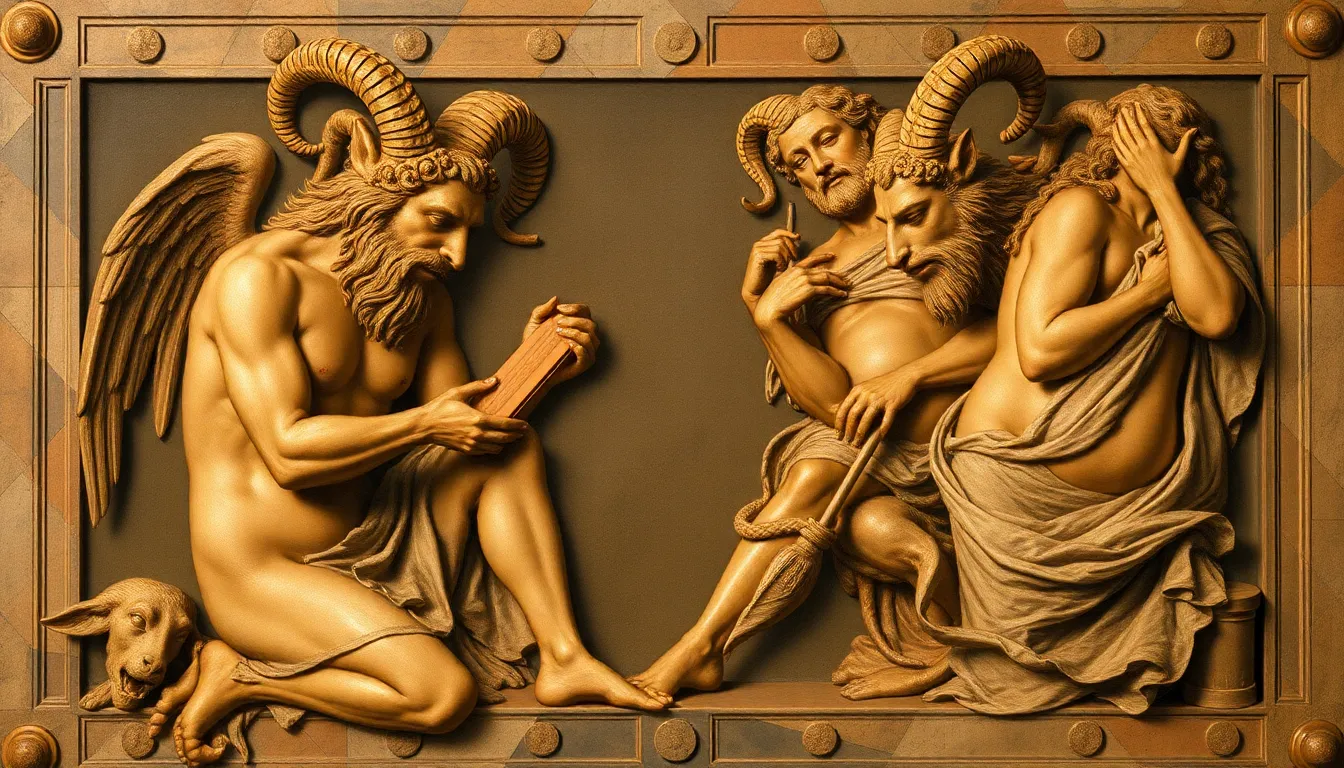The Influence of Satyrs on Renaissance Art and Literature
I. Introduction
In Greek mythology, Satyrs are depicted as half-human, half-goat creatures associated with Dionysus, the god of wine, fertility, and revelry. These figures embody the spirit of nature, indulgence, and often, chaotic revelry. The Renaissance, a period spanning roughly from the 14th to the 17th century, was characterized by a revival of classical learning and a renewed interest in ancient cultures, including Greek and Roman mythology. This article aims to examine the profound influence of Satyrs on art and literature during the Renaissance, exploring their enduring symbolism and thematic significance.
II. Historical Context of Satyrs
Satyrs have their origins in ancient Greek mythology, often portrayed as companions of Dionysus. They symbolize the untamed aspects of nature and human emotion, serving both as a reminder of the pleasures of life and the potential dangers of excess.
Throughout history, the imagery of Satyrs evolved significantly. While they were primarily associated with ecstatic revelry in classical Greece, their representation transformed during the Renaissance. This period saw a revival of interest in classical themes, leading to a reimagining of Satyrs as more complex figures, embodying not just chaos but also a deeper connection to nature and humanity.
In Roman culture, Satyrs were often conflated with Fauns, highlighting their dual nature as both playful and wild. The Renaissance embraced this duality, allowing artists and writers to explore the multifaceted symbolism of Satyrs in their work.
III. Satyrs in Renaissance Art
Renaissance art frequently drew upon classical mythology, making Satyrs a popular subject. Common themes included the celebration of nature, the juxtaposition of civilization and the wild, and the exploration of human emotion through indulgence and chaos.
Notable artists of the Renaissance depicted Satyrs in various ways, each interpreting their essence through unique lenses:
- Michelangelo: In his sculptures and paintings, Michelangelo often captured the muscularity and raw energy of Satyrs, emphasizing their connection to both nature and the divine.
- Raphael: Raphael’s works often feature graceful representations of Satyrs, blending their playfulness with a sense of elegance and beauty, reflecting the harmony of nature.
- Titian: Known for his vibrant use of color, Titian depicted Satyrs in dynamic scenes, often intertwined with figures of women, highlighting themes of seduction and revelry.
In specific artworks, Satyrs are represented in various contexts, prompting diverse interpretations. For instance, Titian’s “Bacchanal” showcases Satyrs reveling in nature, symbolizing the joy of life and the celebration of the senses.
IV. Satyrs in Renaissance Literature
In literature, Satyrs inspired a multitude of satirical and poetic elements, reflecting the complexities of human nature and the pursuit of pleasure. The concept of “satire” itself derives from these mythological beings, emphasizing their role in critiquing societal norms and human behavior.
Key literary figures influenced by Satyr mythology include:
- Petrarch: His poems often explore themes of love and nature, resonating with the spirit of Satyrs as embodiments of desire and the natural world.
- Boccaccio: In “The Decameron,” Boccaccio incorporates Satyr-like characters that embody both comedic and serious aspects of human life, reflecting the duality of pleasure and morality.
- Shakespeare: Satyrs appear in various forms in Shakespeare’s plays, such as in “A Midsummer Night’s Dream,” where they symbolize the wild, untamed aspects of love and desire.
Themes of nature, indulgence, and human emotion intertwine in these literary works, allowing authors to explore the complexities of existence through the lens of Satyr mythology.
V. Symbolism and Themes Associated with Satyrs
Satyrs symbolize a rich tapestry of themes, including:
- Hedonism and Nature: Satyrs represent the pursuit of pleasure and the joys of the natural world, often embodying the idea that indulgence is a natural part of life.
- Duality of Human Nature: They reflect the tension between civilization and wildness, showcasing the internal struggles individuals face between societal expectations and primal instincts.
- Pastoral and the Wild: Satyrs are often associated with pastoral settings, symbolizing a return to nature and the simplicity of rural life, contrasting with the complexities of urban existence.
VI. The Legacy of Satyrs in Later Artistic Movements
The influence of Satyrs extended beyond the Renaissance, impacting later artistic movements such as Baroque and Rococo art. In these periods, Satyrs continued to symbolize indulgence and the celebration of the senses, often depicted in elaborate and dynamic compositions.
In modern literature and art, the Satyr motif has evolved, often representing themes of rebellion against societal norms and the exploration of human desires. Their continued relevance highlights the timeless nature of these mythological figures in reflecting human experience.
VII. Critical Interpretations and Scholarly Perspectives
Modern scholarship offers various interpretations of Satyrs in the Renaissance, examining their role in shaping cultural narratives. Scholars debate the implications of Satyr imagery, exploring themes of sexuality, nature, and the human condition.
Discussions surrounding Satyrs often center on their duality, questioning how these figures represent both the chaos of human desires and the beauty of nature. This complexity allows for a deeper understanding of how Satyrs influence cultural narratives and artistic expression.
VIII. Conclusion
In summary, Satyrs have profoundly influenced Renaissance art and literature, serving as symbols of hedonism, nature, and the duality of human existence. Their legacy endures in cultural history, reflecting the complexities of human emotion and the perennial struggle between civilization and wildness.
As mythological figures, Satyrs continue to inspire artistic expression, reminding us of the importance of indulging in life’s pleasures while acknowledging the wild aspects of our nature. Their presence in art and literature serves as a testament to the enduring power of mythology in shaping cultural identity.




